Intro
In the dynamic realm of live streaming, grasping the key terms is akin to wielding a powerful tool. This blog post serves as a people’s guide, unraveling the essential terms that are repeatedly used during the live steaming process. By delving into these definitions, people will be more flexible in using technology, unlocking the full potential of live streaming. Let’s decode the glossary of live streaming, paving the way for a richer and more immersive streaming experience.

(source: https://shorturl.at/aejEJ)
A
What is AAC?
AAC stands for Advanced Audio Coding. It is a standardized audio coding format designed to achieve better sound quality than the traditional MP3 format. It is known for its efficiency in delivering high-quality audio at lower bit rates, making it a preferred codec for various digital audio platforms.
What is Adaptive streaming?
It’s a technology used in online multimedia streaming to deliver the best possible viewing experience to users under varying network conditions. Instead of providing a single, fixed video file, adaptive streaming dynamically adjusts the quality of the video based on the viewer's network bandwidth and device capabilities.

(source: https://shorturl.at/kpL16)
B
What is Bitrate?
Bitrate, short for "bit rate," refers to the amount of data processed or transmitted over a specific period, usually expressed in bits per second (bps). It is a measure of the rate of data transfer in digital communication or multimedia files.In the context of streaming and multimedia, bitrate is crucial for determining the quality of audio or video playback. A higher bitrate generally indicates better quality, as more data is used to represent the audio or video content. However, higher bitrates also mean larger file sizes and increased demands on network bandwidth.
What is Bandwidth?
It refers to the maximum rate of data transfer across a network, communication channel, or internet connection, typically measured in bits per second (bps). It represents the capacity of the channel to transmit data within a specified period.
C
What is CDN?
It known Content Delivery Network is a distributed network of servers strategically located across various geographic locations to deliver web content, such as text, images, videos, and other resources, to users.
What is Cat 5/ Cat 6?
Cat 5 and Cat 6 cables are types of twisted pair cables commonly used in networking to connect devices such as computers, routers, and switches. They belong to a family of Ethernet cables designed to transmit data between devices within a local area network.
D
What is Decoding?
Decoding refers to the process of converting encoded audio and video signals back into their original, uncompressed format for playback.

(source: https://shorturl.at/mxEFW)
E
What is Encoding?
Encoding is the process of converting audio and video signals into a digital format that can be efficiently transmitted, stored, and played back on various devices.
F
What is Frame Rate?
Frame Rate, often expressed in frames per second (fps), refers to the number of individual frames or images displayed in one second of video playback. It is a crucial factor in determining the smoothness and fluidity of motion in video content. Common frame rates include 24 fps, 30 fps, and 60 fps.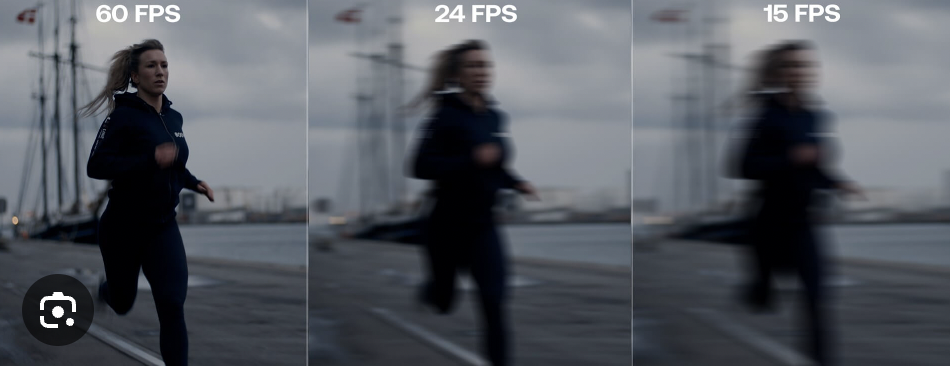
(source: https://artlist.io/blog/how-to-use-frame-rates/)
G
What is Green screening?
Green screening, also known as chroma keying or color keying, is a visual effects technique used in video and film production. It involves filming a subject against a solid-colored backdrop, commonly green or blue, and later replacing that color with another image or video during post-production.
H
What is H.264?
H.264, known as Advanced Video Coding (AVC), is a widely used video compression standard that was introduced by the International Telecommunication Union. It offers high-quality video compression with a low bit rate—a key factor for internet video streaming.
What is H.265?
H.265, also known as High Efficiency Video Coding (HEVC), is a video compression standard designed to improve upon the efficiency of its predecessor, H.264. It can achieve up to 50% more compression than its predecessor. This makes it an excellent option for high-resolution video formats.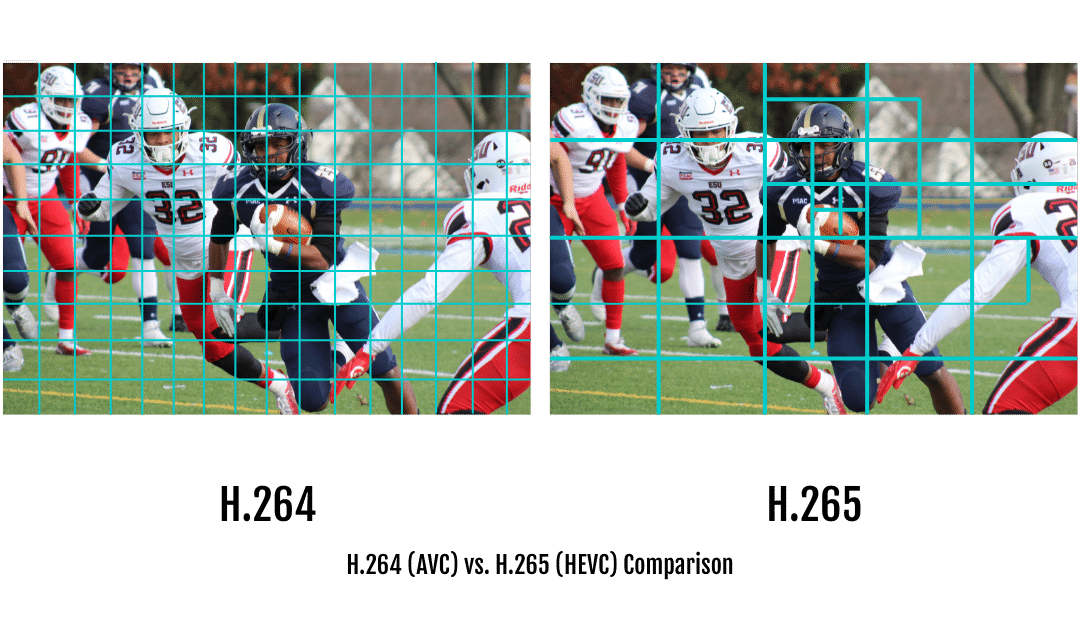
(source: https://shorturl.at/juAJ7)
What is High Definition?
High Definition (HD) refers to a standard of image or video resolution that is significantly higher than that of standard definition (SD).
What is HDMI?
HDMI, or High-Definition Multimedia Interface, is a standardized audio or video interface that allows the transmission of uncompressed digital audio and video signals between compatible devices. It is commonly used to connect devices such as televisions, monitors, projectors, Blu-ray players, gaming consoles, and other multimedia devices.
I
What is IP Camera?
It is a type of digital video camera that captures and transmits video data over an IP network, such as the Internet. Unlike traditional analog CCTV cameras, IP cameras use digital technology to encode and transmit video signals. They connect to a network, either wired or wirelessly, allowing users to access and view the camera's live feed remotely using a computer, smartphone, or other internet-enabled devices.
What is ISO Recording?
ISO Recording refers to the ability to capture video content directly from the camera's sensor without any in-camera processing or compression.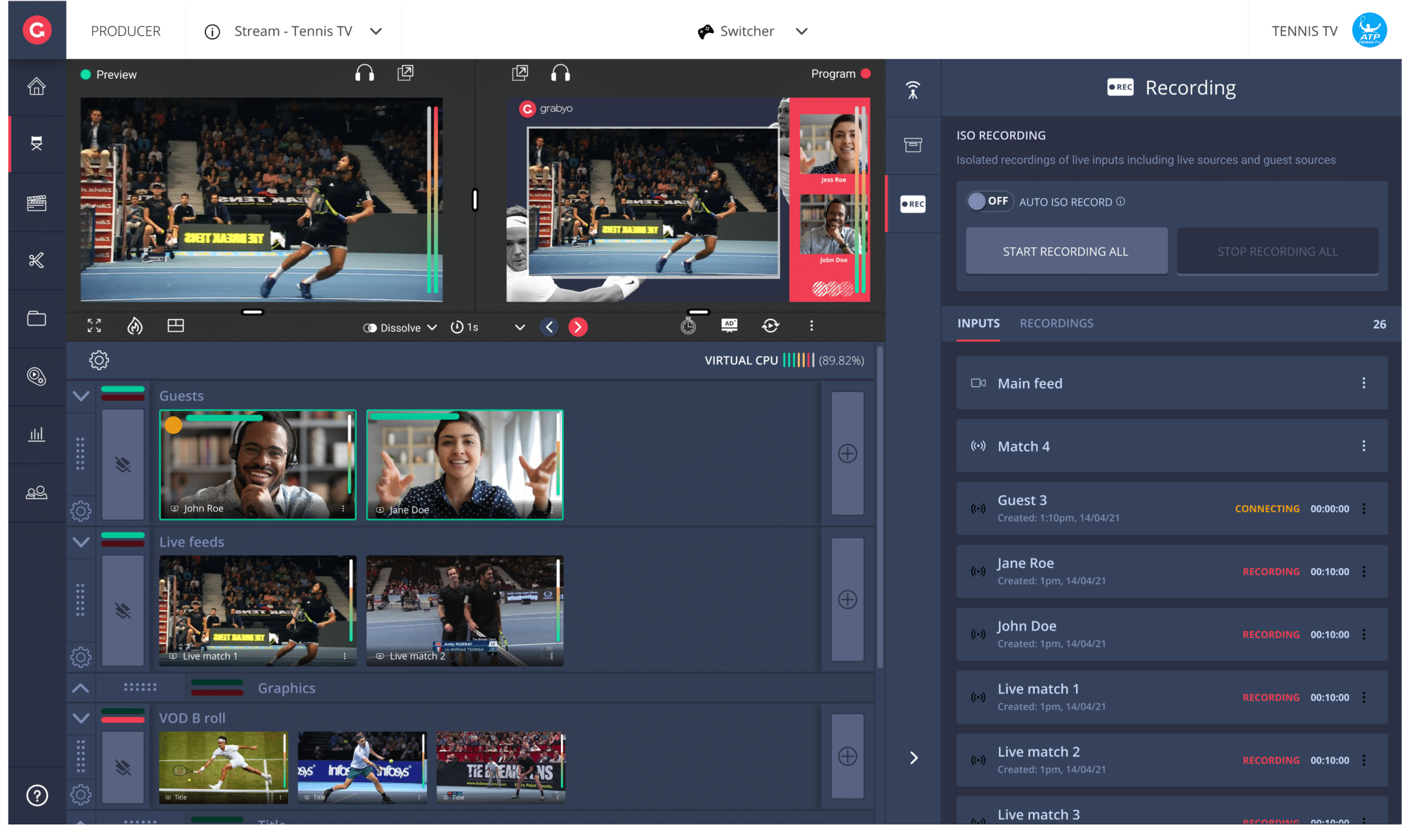 (source: https://shorturl.at/eX046 )
(source: https://shorturl.at/eX046 )
K
What is Key Frame Interval?
Key Frame Interval is a parameter in video compression that defines how frequently keyframes (I-frames) are inserted into a video stream. Keyframes are frames that contain a full image, providing a reference point for the video decoder.
The Key Frame Interval setting influences video compression efficiency and quality. A shorter interval means more frequent keyframes, resulting in better-seeking accuracy but potentially larger file sizes. A longer interval reduces file sizes but may impact seeking accuracy and video quality at specific points. The optimal keyframe interval depends on the specific requirements of the video content and its intended use.
L
What is Latency?
Latency is the time it takes for video and audio data to travel from the source (encoder) to the destination (viewer's device). Lower latency is desirable in live streaming scenarios to minimize delays, providing a more real-time and interactive experience for viewers.
M
What is Multistreaming?
Multistreaming refers to the practice of broadcasting a live stream to multiple online platforms simultaneously. Instead of streaming to a single platform, content creators use multistreaming services or software to distribute their live video feed to various platforms, such as social media websites, video-sharing platforms, or other online streaming services.
N
What is NDI?
NDI, which stands for "Network Device Interface," is a protocol developed by NewTek that enables the transmission of high-quality video and audio signals over a local area network.
It allows different devices and software applications to communicate and share video and audio content in real time. It is commonly used in the broadcasting and live production industry, providing a way to connect cameras, computers, and other production equipment over a network without the need for dedicated video cables.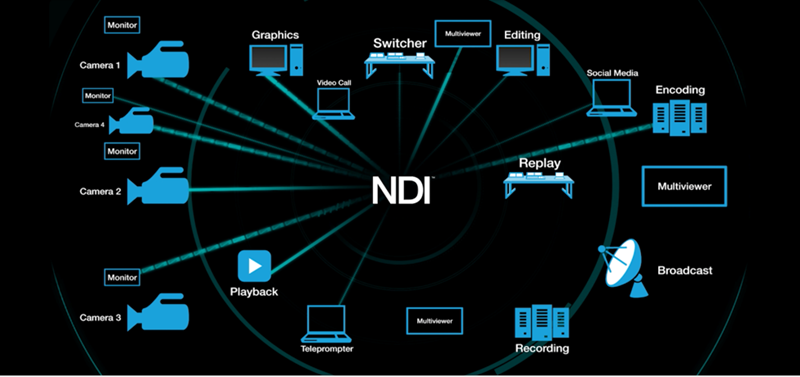
(source: https://zsyst.com/2023/03/ndi/)
O
What is OBS?
OBS, or Open Broadcaster Software, is a free and open-source software for video recording and live streaming.
P
What is Packet Loss?
Packet loss refers to the scenario where data packets being transmitted across a computer network do not reach their destination. This can occur due to various reasons, such as network congestion, hardware issues, or communication errors.
What is Progressive video?
Progressive video refers to a method of displaying or transmitting video content in which each frame is displayed sequentially, one after the other, in a continuous stream.
R
What is Resolution?
Resolution refers to the number of distinct pixels that can be displayed in an image, typically measured in terms of width and height. It determines the clarity, detail, and quality of a visual display.Common resolutions include 720p, 1080p, 1440p , and 4K. Higher resolutions generally offer sharper and more detailed images but may require more powerful hardware for rendering and displaying.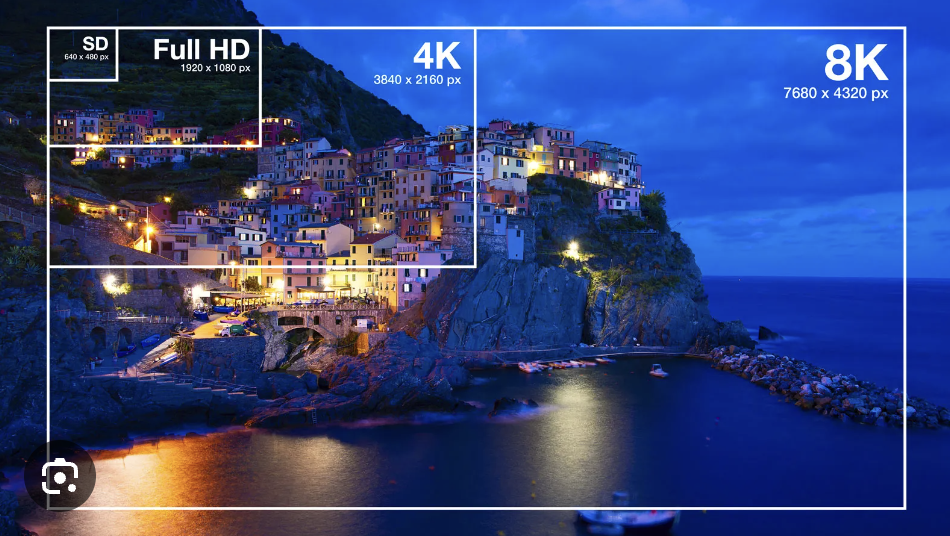
(source:https://shorturl.at/ityDF)
What is RTMP?
RTMP (Real-Time Messaging Protocol) is a multimedia streaming and communication protocol used for transmitting audio, video, and other data between a server and a client over the internet. Developed by Adobe, RTMP is designed for live streaming, interactive multimedia content, and communication applications.
S
What is SRT?
SRT (Secure Reliable Transport) is an open-source video transport protocol designed for delivering high-quality, low-latency video streams over unpredictable networks.
What is SDI?
SDI stands for Serial Digital Interface. It is a standard for transmitting digital video and audio signals over coaxial cables. SDI is commonly used in professional video production settings, such as broadcast studios and live event production. It supports various video resolutions, including standard definition (SD), high definition (HD), and even ultra-high definition (UHD).
T
What is Transcoding?
Transcoding is the process of converting digital media files from one encoding or format to another. It involves decoding the original file and then re-encoding it in a different format or with different settings.
V
What is VOD?
VOD (Video On Demand) is a system that allows users to select and watch video content whenever they choose, rather than at a scheduled broadcast time. With VOD, viewers have the flexibility to access a library of videos, movies, or TV shows and watch them at their convenience.
(source:https://castr.com/blog/what-is-vod/)
W
What is WebRTC?
WebRTC stands for Web Real-Time Communication. It is an open-source project that enables real-time communication (audio, video, and data streaming) directly between web browsers and mobile applications. WebRTC eliminates the need for third-party plugins or applications, providing a framework for peer-to-peer communication. It is commonly used for video conferencing, online chat applications, and live streaming on the web.
Conclusion
In the realm of live streaming, mastering the A-Z glossary of terms is paramount for content creators. NearStream not only offers live streaming cameras but also equips users with a comprehensive A-Z glossary, ensuring a thorough understanding of crucial terms and definitions. Explore the possibilities with NearStream and redefine your live streaming journey now!












































